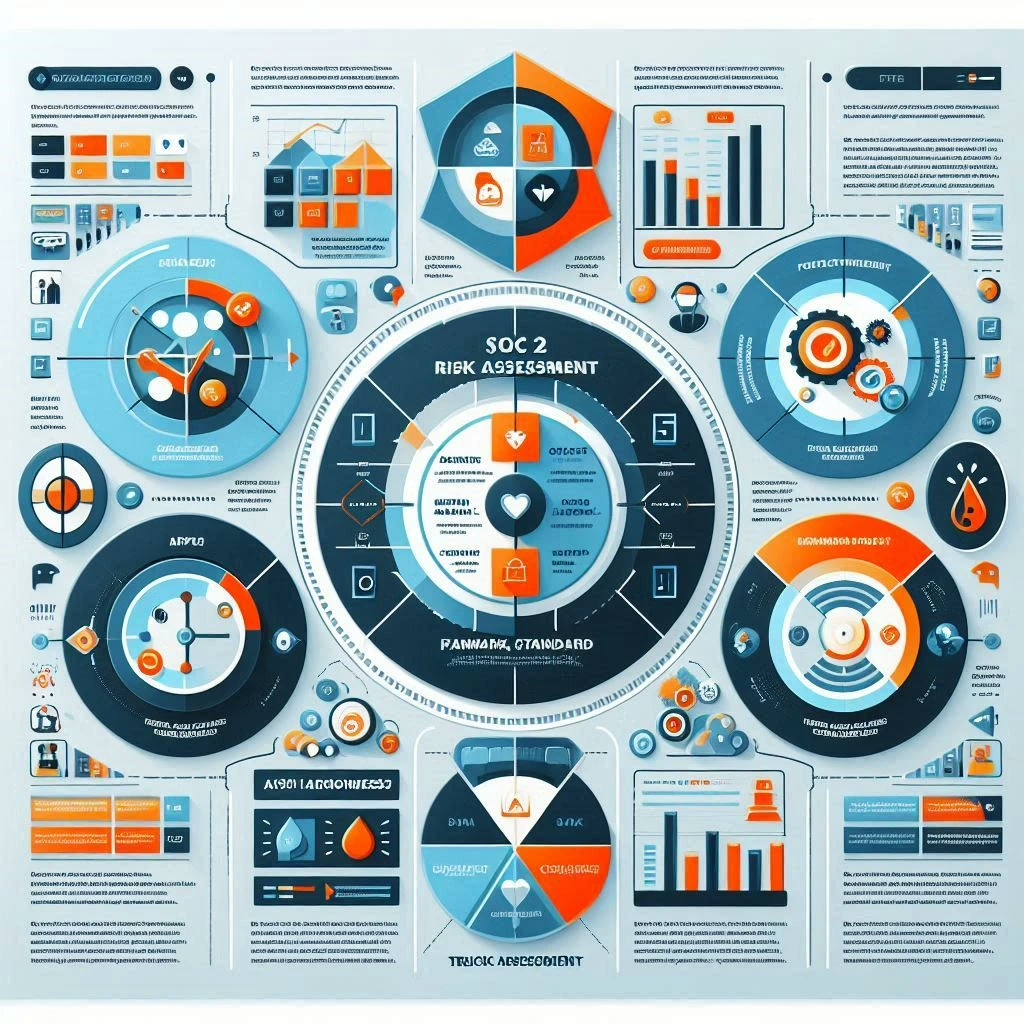In today’s rapidly evolving business landscape, understanding the advantages of having an internal audit department has become increasingly vital. Internal audits serve as a cornerstone for organizations, providing independent assurance on the effectiveness of governance processes, risk management, and internal controls. By evaluating compliance with regulations and assessing operational efficiency, internal auditors help safeguard an organization’s assets while fostering a culture of transparency and accountability [11][15].
As technology continues to advance, internal audit functions must adapt to leverage these innovations effectively. The integration of data analytics, artificial intelligence (AI), and robotic process automation (RPA) is transforming traditional audit practices, enabling auditors to conduct more efficient and thorough assessments. These technological advancements not only enhance the effectiveness of audits but also allow for deeper insights into organizational processes, ultimately leading to improved decision-making and risk management [3][8].
This blog will explore the intersection of technology and internal audit practices, focusing on how these innovations are reshaping the internal audit landscape. Key themes will include the benefits of embracing technology, the skills required for auditors to adapt to these changes, and the strategic value that a tech-enabled internal audit department can provide to organizations. By understanding these dynamics, internal auditors and IT professionals can better navigate the complexities of modern auditing and harness technology to drive greater efficiency and effectiveness in their practices.
The Evolution of Internal Audit
The internal audit function has undergone significant transformations over the years, adapting to the changing business landscape and the increasing complexity of organizational structures. This evolution is marked by a historical overview of internal audit processes, the traditional challenges faced by audit departments, and the pivotal role technology plays in reshaping audit methodologies.
Historical Overview of Internal Audit Processes
- Origins and Development: Internal auditing has its roots in the early 20th century, primarily focusing on financial audits to ensure accuracy in financial reporting. Over time, the scope expanded to include compliance, operational efficiency, and risk management, reflecting the growing complexity of business operations and regulatory requirements [5].
- Formalization of Standards: The establishment of professional standards and frameworks, such as those from the Institute of Internal Auditors (IIA), has provided a structured approach to internal auditing. These standards emphasize the importance of independence, objectivity, and a systematic methodology in conducting audits [4].
Traditional Challenges Faced by Internal Audit Departments
- Resource Limitations: Internal audit departments often grapple with limited resources, including budget constraints and a shortage of skilled personnel. This can hinder their ability to conduct comprehensive audits and address all areas of risk effectively [2].
- Resistance to Change: Many organizations have historically viewed internal audits as a compliance function rather than a strategic partner. This perception can lead to resistance from management and staff, making it challenging for auditors to implement necessary changes and improvements [3].
- Data Overload: With the increasing volume of data generated by organizations, internal auditors face the challenge of sifting through vast amounts of information to identify relevant risks and insights. Traditional audit methodologies may not be equipped to handle this data effectively [11].
The Role of Technology in Transforming Audit Methodologies
- Automation and Efficiency: Technological innovations, such as data analytics and automation tools, have revolutionized internal audit practices. These technologies enable auditors to streamline processes, reduce manual tasks, and focus on high-risk areas, ultimately improving efficiency and accuracy in audits [12][13].
- Enhanced Insights: By leveraging advanced analytics, internal auditors can gain deeper insights into business operations and identify trends that may indicate potential risks. This data-driven approach allows for more comprehensive audits and informed decision-making [11].
- Adaptation to Change: The integration of technology into internal audit functions has allowed departments to adapt more quickly to changes in the business environment. For instance, the adoption of digital tools facilitates remote audits and real-time monitoring, which are essential in today’s fast-paced and often unpredictable business landscape [10].
- Future Outlook: As technology continues to evolve, internal audit departments are expected to embrace new tools and methodologies that enhance their capabilities. The Internal Audit 4.0 framework, for example, emphasizes aligning audit outcomes with organizational goals and fully embracing digital technologies to maximize impact.
The evolution of internal audit practices reflects a shift from traditional compliance-focused approaches to a more strategic, technology-driven function. By understanding this evolution, internal auditors and IT professionals can better appreciate the advantages of integrating innovative technologies into their audit processes, ultimately enhancing the value they provide to their organizations.
Key Technological Innovations Impacting Internal Audit
In the evolving landscape of internal auditing, technology plays a pivotal role in enhancing the effectiveness and efficiency of audit functions. Here are some key technological innovations that are reshaping internal audit practices:
- Data Analytics: The integration of data analytics into internal audit processes significantly enhances audit accuracy. By analyzing large volumes of data, auditors can identify trends, anomalies, and areas of risk that may not be apparent through traditional methods. This capability allows for a more thorough evaluation of internal controls and compliance, ultimately leading to better decision-making and risk management [3][5].
- Artificial Intelligence (AI): AI is revolutionizing risk assessment and anomaly detection within internal audits. By leveraging machine learning algorithms, auditors can automate the identification of potential risks and irregularities in financial data. This not only speeds up the audit process but also improves the accuracy of findings, enabling auditors to focus on more complex issues that require human judgment [10][15].
- Robotic Process Automation (RPA): RPA is transforming the way internal auditors handle repetitive tasks. By automating routine processes such as data entry, report generation, and compliance checks, RPA allows auditors to allocate their time and resources more effectively. This leads to increased productivity and allows for a more strategic approach to auditing, as auditors can concentrate on higher-value activities [13][14].
- Cloud Computing: The adoption of cloud computing facilitates improved collaboration and data storage for internal audit departments. Cloud-based solutions enable auditors to access real-time data and collaborate seamlessly with team members, regardless of their location. This flexibility not only enhances communication but also ensures that auditors have the most up-to-date information at their fingertips, which is crucial for effective auditing [8][12].
The integration of these technological innovations is not only enhancing the capabilities of internal audit departments but also positioning them as strategic partners in organizational governance and risk management. By harnessing these technologies, internal auditors can improve their processes, deliver more accurate insights, and ultimately contribute to the overall success of their organizations.
Benefits of Integrating Technology in Internal Audit
The integration of technology within internal audit departments is transforming traditional practices, leading to significant advantages that enhance the overall effectiveness and efficiency of audit processes. Here are some key benefits of leveraging technology in internal audits:
- Increased Efficiency and Effectiveness: Technology enables internal auditors to automate routine tasks, which significantly speeds up the audit process. Automated tools can handle large volumes of data quickly, allowing auditors to focus on more complex analyses and strategic decision-making. This shift not only streamlines operations but also ensures that audits are conducted in a timely manner, aligning with the fast-paced business environment [13].
- Improved Accuracy and Reduction of Human Error: By utilizing advanced software and automated systems, internal audit departments can minimize the risk of human error that often accompanies manual processes. Automated data processing ensures that findings are more accurate and reliable, which is crucial for maintaining the integrity of the audit results. This technological approach leads to a more thorough examination of data, enhancing the overall quality of the audit [11].
- Enhanced Ability to Detect Fraud and Compliance Issues: The use of data analytics and artificial intelligence (AI) in internal audits significantly improves the ability to identify anomalies and potential fraud. These technologies can analyze patterns and trends in data that may indicate compliance issues or fraudulent activities, allowing auditors to act swiftly and effectively. This proactive approach to risk management is essential in today’s complex regulatory landscape [3].
- Greater Insights Through Data Visualization and Reporting Tools: Technology facilitates the use of data visualization tools that help auditors present their findings in a more comprehensible and impactful manner. These tools allow for the creation of dynamic reports that highlight key insights and trends, making it easier for stakeholders to understand the audit results and make informed decisions. Enhanced reporting capabilities also support better communication between the audit department and other organizational units [12].
The integration of technology in internal audit departments not only enhances operational efficiency but also strengthens the overall audit process, increasing its overall advantage to the firm. By embracing these innovations, internal auditors can provide greater value to their organizations, ensuring that they remain relevant and effective in a rapidly evolving business landscape.
Challenges and Considerations
As internal audit departments increasingly harness technology to enhance their practices, several challenges and considerations must be addressed to ensure successful integration. Here are some key points to consider:
- Resistance to Change Among Audit Professionals: One of the primary hurdles in adopting new technologies is the resistance to change from audit professionals. Many auditors may be accustomed to traditional methods and may feel apprehensive about transitioning to automated processes. This resistance can stem from a lack of understanding of the benefits that technology can bring to the audit process, such as improved efficiency and accuracy in risk assessment and fraud detection [4][10].
- Need for Continuous Training and Upskilling: The rapid pace of technological advancements necessitates ongoing training and upskilling for internal auditors. As tools and methodologies evolve, auditors must stay informed about the latest technologies, such as AI and data analytics, to effectively leverage these innovations in their audits. Continuous professional development is essential to ensure that audit teams possess the necessary skills to utilize new technologies effectively and to adapt to changing audit environments [5][12].
- Data Privacy and Cybersecurity Concerns: With the integration of technology comes the responsibility to safeguard sensitive data. Internal auditors must be vigilant about data privacy and cybersecurity risks associated with the use of advanced technologies. Ensuring compliance with regulations and protecting organizational assets from potential breaches is critical. This requires a robust framework for data governance and security measures to mitigate risks while utilizing technology in audit processes [5][13].
- Balancing Technology with Critical Thinking and Judgment in Audits: While technology can enhance the efficiency of internal audits, it is crucial to maintain a balance between automated processes and the critical thinking and judgment that auditors bring to their work. Technology should be viewed as a tool that supports auditors in their decision-making rather than a replacement for human insight. Auditors must continue to apply their expertise and analytical skills to interpret data and make informed judgments, ensuring that the audit process remains thorough and effective [4][15].
While the integration of technology into internal audit departments presents numerous advantages, it is essential to navigate the associated challenges thoughtfully. By addressing resistance to change, investing in training, prioritizing data security, and maintaining a focus on critical thinking, internal audit professionals can successfully harness technology to enhance their practices and drive organizational success.
The Future of Internal Audit: Trends to Watch
As the landscape of internal audit continues to evolve, technology innovations are playing a pivotal role in reshaping practices and enhancing the effectiveness of audit departments. Here are some key trends to watch that highlight the advantages of having a robust internal audit department in this technological era:
- Predictive Analytics for Proactive Risk Management: Internal audit departments are increasingly leveraging predictive analytics to identify potential risks before they materialize. By analyzing historical data and trends, auditors can focus on high-risk areas, allowing for more comprehensive audits and timely interventions. This data-driven approach not only enhances the accuracy of audits but also enables organizations to mitigate risks proactively, ultimately leading to improved governance and compliance [6][11].
- Increased Use of Blockchain Technology for Transparency: Blockchain technology is emerging as a powerful tool for internal auditors, providing a secure and transparent way to record transactions. This technology enhances the integrity of data, making it easier for auditors to verify information and trace transactions back to their source. The adoption of blockchain can significantly reduce the risk of fraud and errors, thereby increasing the overall reliability of financial reporting [12].
- Collaboration Between Internal Audit and IT Departments: The integration of technology into internal audit practices necessitates closer collaboration between internal auditors and IT professionals. This partnership is essential for understanding the complexities of IT systems and ensuring that audits are aligned with technological advancements. By working together, these departments can enhance the effectiveness of audits, streamline processes, and ensure that internal controls are robust and effective [4][10].
- The Evolving Skill Set Required for Future Internal Auditors: As technology continues to advance, the skill set required for internal auditors is also evolving. Future auditors will need to be proficient in data analytics, cybersecurity, and emerging technologies such as AI and machine learning. This shift emphasizes the importance of continuous learning and adaptation within the internal audit profession, ensuring that auditors are equipped to handle the challenges posed by new technologies and methodologies [3].
The advantage of internal audit departments is being shaped by technological innovations that enhance efficiency, transparency, and risk management. By embracing these trends, internal auditors can provide greater value to their organizations, ensuring that they remain relevant and effective in an increasingly complex business environment.
Conclusion
In the rapidly evolving landscape of internal auditing, the integration of technology is not just an enhancement; it is a transformative force that redefines the very essence of audit practices. The advantages of having a dedicated internal audit department are amplified through the adoption of innovative technologies, which facilitate improved risk assessment, fraud detection, and task automation. These advancements enable internal auditors to provide more accurate and timely insights, ultimately leading to better governance and enhanced organizational performance.
Key points to consider include:
- Transformative Potential: Technology innovations, such as AI and data analytics, empower internal audit departments to streamline processes, improve efficiency, and gain deeper insights into business operations. By leveraging these tools, auditors can focus on higher-value activities, such as strategic risk management and compliance assurance, rather than being bogged down by routine tasks [1][10][15].
- Collaboration is Key: The future of internal audit relies heavily on collaboration between internal auditors and IT professionals. By working together, these two groups can ensure that the technology implemented aligns with the organization’s goals and enhances the audit function’s effectiveness. This partnership is crucial for navigating the complexities of modern business environments and for fostering a culture of transparency and accountability [2][4][12].
- Stay Updated: As technology continues to evolve, it is imperative for internal auditors and IT professionals to stay informed about the latest advancements. Continuous learning and adaptation will not only enhance the capabilities of the internal audit function but also ensure that organizations remain resilient in the face of emerging risks and challenges. Embracing a mindset of innovation will position internal audit departments as strategic partners in driving organizational success [3][8][11].
In conclusion, the integration of technology into internal audit practices is essential for maximizing the value of the audit function. By harnessing these advancements, internal auditors can significantly enhance their contributions to organizational governance and risk management. The call to action is clear: collaborate, innovate, and stay informed to navigate the future of internal auditing effectively.
Find out more about Shaun Stoltz https://www.shaunstoltz.com/about/
This post was written by an AI and reviewed/edited by a human.



